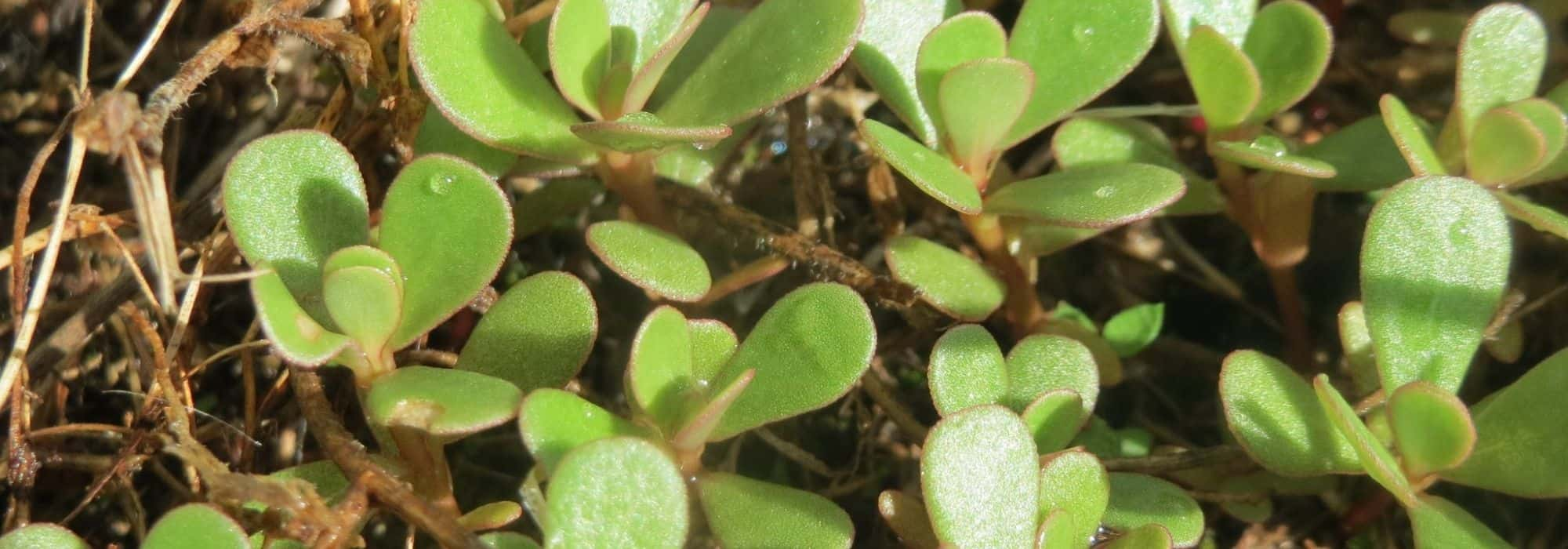
Purslane: sowing, growing and harvesting
Contents
Purslane in a nutshell
- Purslane (Portulaca oleracea) is an annual oleraceous plant from the family Portulacaceae
- It is a creeping plant with fleshy leaves that have a slightly tangy and peppery flavour. It can be eaten raw or cooked
- Rich in antioxidants, it is a key plant in the Cretan diet, sometimes regarded as an adventive
- Very robust, it thrives in dry and rather light soils
- Purslane enjoys full sun and requires no special maintenance
A word from our expert
If you live in the south of France or along the Atlantic coast, you may be familiar with wild purslane, which easily establishes itself in fallow land, sandy areas, or even between the cracks of pavements. Sometimes considered an adventive, purslane (Portulaca oleracea) deserves a place in the vegetable garden due to its nutritional and culinary qualities.
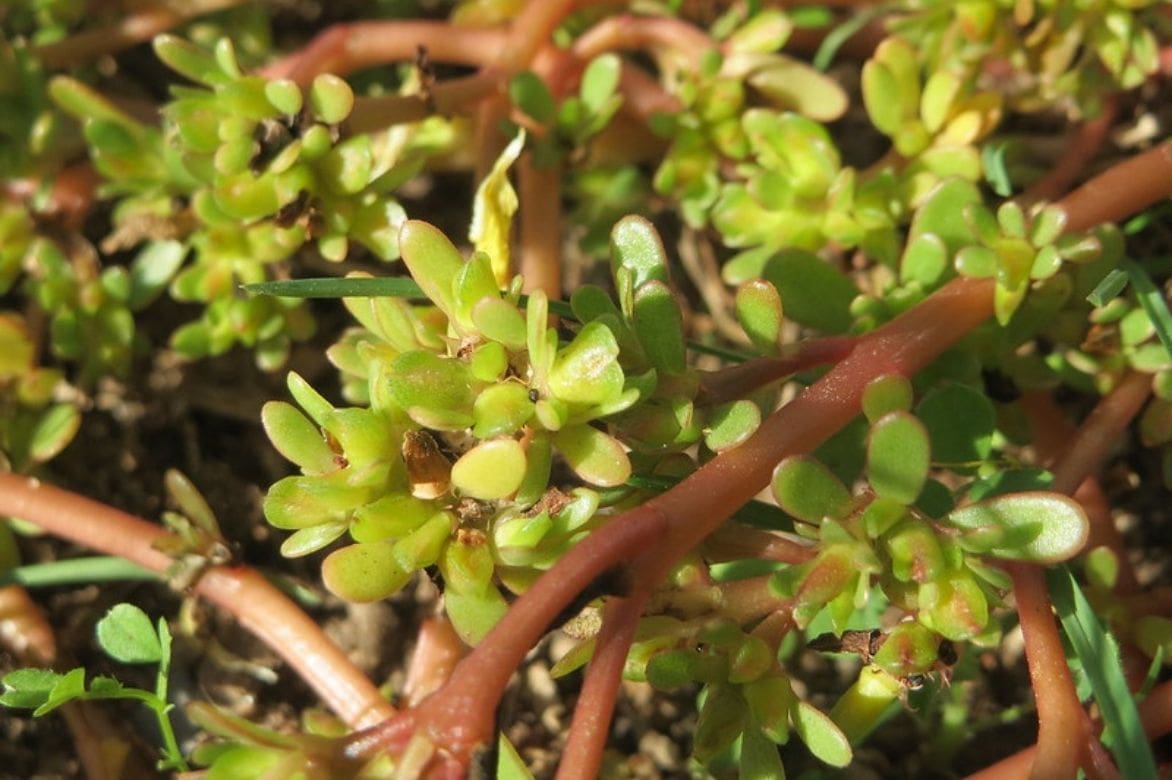
The purslane offers green or golden leaves depending on the variety and reddish stems
This annual fleshy plant features small fleshy leaves with a slightly spicy and tangy flavour that works wonders in salads. They can also be cooked, fried, or even used as condiments, just like the reddish stems. Widely used in Cretan, Turkish, or Egyptian cuisines, purslane has the advantage of rapid growth and requires no special care.
However, it loves warmth and prefers dry, sandy soil.
It is also a plant known for its content of antioxidants, vitamins, and minerals. Moreover, it serves as a bio-indicator of soil quality.
Edible, common purslane should not be confused with perennial purslane (Portulaca grandiflora) or Delospermas, which are used as ornamental plants with beautiful brightly coloured flowers.
Description and botany
Botanical data
- Latin name Portulaca oleracea
- Family Portulacaceae
- Common name Common purslane, kitchen purslane, pigweed, market purslane, porcelain, good fat
- Flowering summer
- Height 10 to 30 cm
- Exposure full sun
- Soil type dry or ordinary
- Hardiness not hardy
Purslane (Portulaca oleracea) is a plant that originates from tropical to subtropical regions. Known for over 2000 years in India and Persia, it was introduced to Europe by the Romans. It is also found in traditional Asian pharmacopoeia. In the Middle Ages, it was not uncommon to find purslane in the gardens of priests. In 1536, in his work De natura stirpum libri tres, physician and botanist Jean Ruel provided a morphological description without classifying it. Later, Louis XIV’s gardener, Jean-Baptiste de la Quintinie, also cultivated purslane, considering it a “health salad”, perhaps because he sensed its nutritional qualities. Nevertheless, kitchen purslane was cultivated and consumed until the mid-19th century, before falling into disuse. It has since made a comeback, like many forgotten vegetables that have become “trendy” again.
It must be said that this small herbaceous plant has numerous nutritional and taste virtues. The leaves of purslane have a unique flavour, slightly tangy, even lemony, and spicy, which works wonders in salads, mixed in mesclun with rocket, lamb’s lettuce, beet or spinach shoots.
Because it is one of the few vegetables that contain Omega-3, purslane is widely consumed in the Cretan diet and more broadly in Mediterranean cuisine. It is also rich in iron, potassium, magnesium, and vitamin C.
All these reasons make it worthwhile to grow purslane in the vegetable garden, provided its proliferation is limited. Its invasive nature sometimes leads it to be considered an adventive. In regions with a mild climate, such as the Mediterranean coast, Corsica, or the Atlantic coast, purslane grows naturally in fallow or uncultivated land, along paths, by the beach, in rubble, and even on pavements. It is less common north of the Loire as it is a frost-sensitive plant that disappears as soon as nights become cooler, around mid-September. However, climate change is gradually pushing it northward.
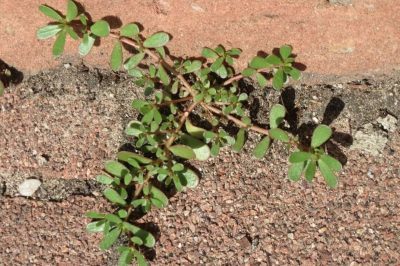
Purslane grows spontaneously on neglected land
Doubts remain about the etymology of its name. “portulaca” may derive from the Latin “Portula,” meaning “small door,” referring to the opening of seed capsules, or from “porcula” related to “porcus” meaning pig. This is simply because, in antiquity, this plant fed pigs. As for “oleracea,” it means “cultivated as a vegetable.”
Purslane is an annual herbaceous plant, branching and prostrate. It has a spreading and creeping habit, extending in a circular tuft up to 60 cm in diameter. Rapidly growing, it is a succulent vegetable plant, capable of storing water in its tissues. This is why purslane thrives in warm climates in dry soils, even growing on tar.
Purslane features bright green or more golden foliage depending on the variety, arranged in rosettes on glabrous, fleshy stems that are cylindrical, either prostrate or upright. The stems are reddish. The round, thick, and also fleshy leaves are sessile, meaning they lack petioles, and are arranged oppositely, sometimes alternately. Their lamina is obovate and spatulate. These leaves, measuring 1 to 2 cm, are crunchy and brittle, with a tangy taste.
In summer, from June to August, small flowers, usually yellow, appear. They bloom in the morning and fade by evening. With 4 to 6 petals, these flowers are also sessile and grow singly or clustered in the axils or at the tips of the branches.
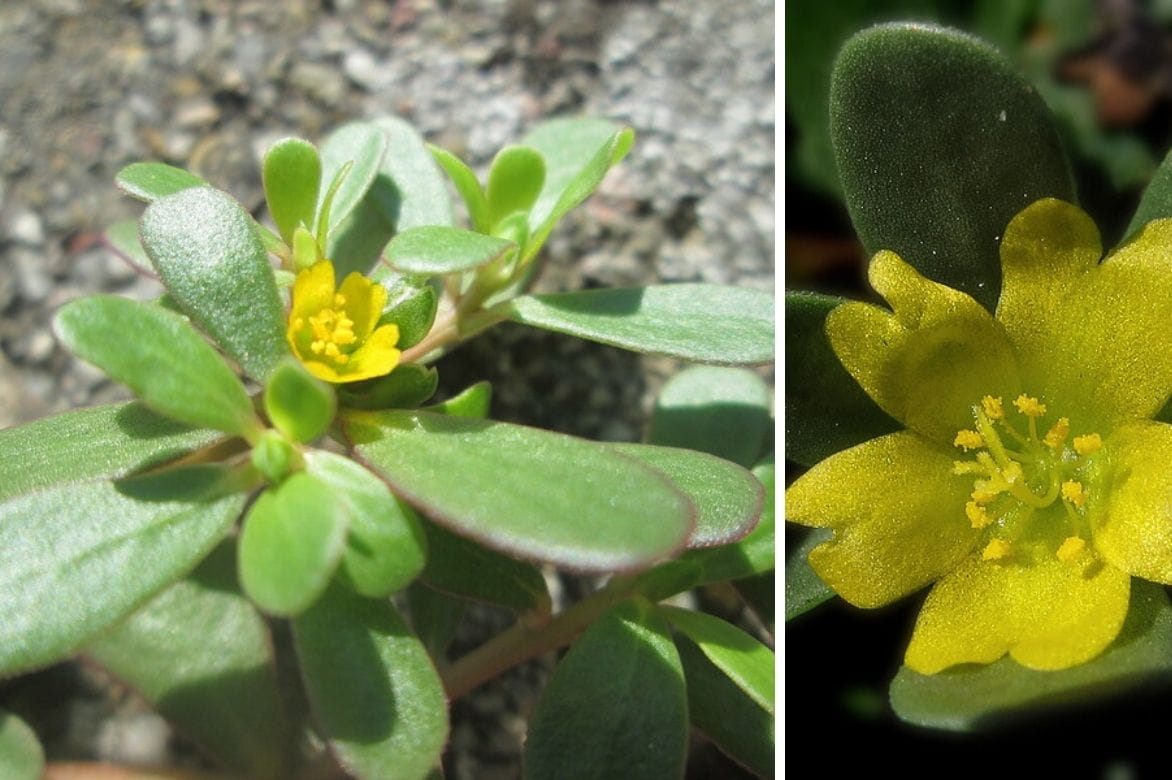
The flowers of purslane are ephemeral and last only one day
These flowers have no ornamental interest, unlike the brightly coloured flowers of perennial purslanes and Delospermas.
The flowers are followed by ovoid seed capsules called pyxides. These capsules open across to release numerous small black and shiny seeds, easily transported by ants. This is why purslane self-seeds easily, with a strong tendency to invade.
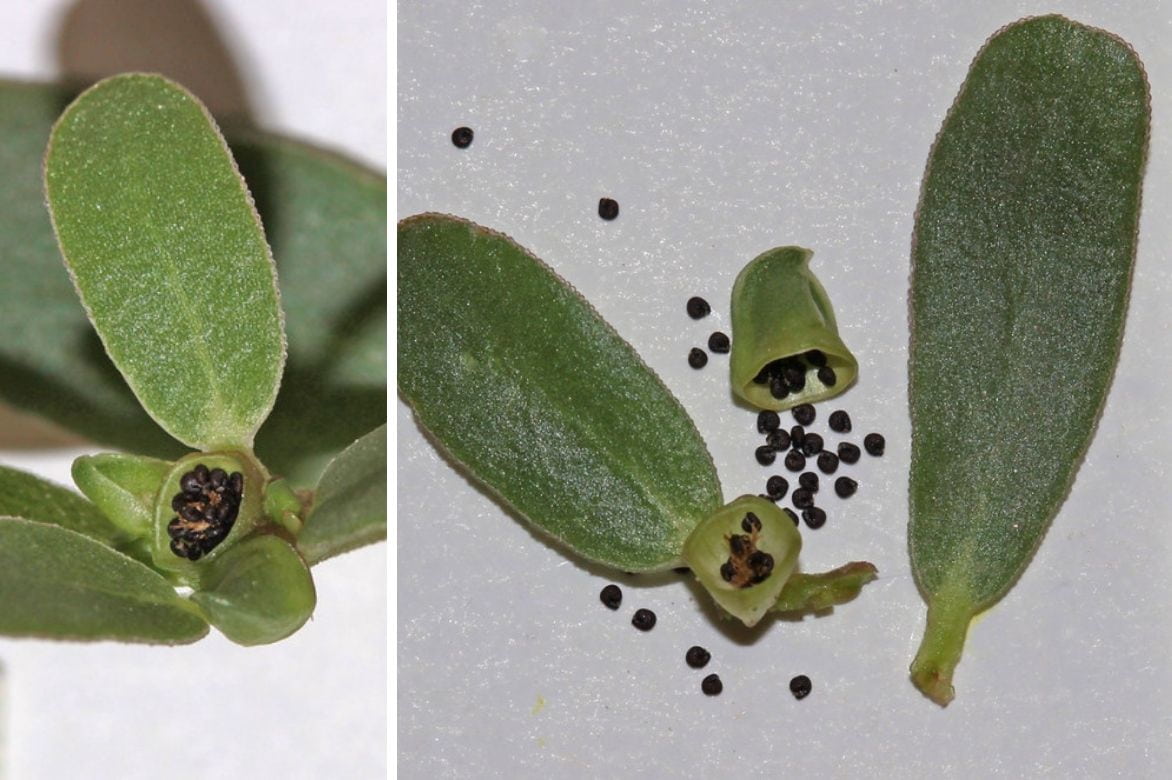
The black and shiny seeds of purslane are contained in an ovoid capsule
Purslane is also considered a bio-indicator plant of the soil. Where it grows spontaneously, your soil is likely compact, poorly aerated, certainly deficient in calcium, and especially has poor water retention.
The different varieties of purslane
Common purslane or kitchen purslane belongs to the family Portulacaceae, which also includes Lewisias, stunning in rockeries, and Cuban claytonia, known as winter purslane, which produces crisp, fleshy leaves.
Portulaca oleracea grows wild, considered an adventive in disturbed environments, and its leaves are edible. However, there is also Portulaca oleracea subsp. sativa, a kitchen cultivar with green or golden foliage and a more upright habit than the wild variety.
Our Favourite Varieties
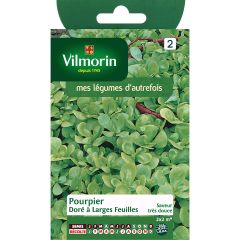
Golden Purslane with Broad Leaves - Vilmorin seeds
- Height at maturity 15 cm
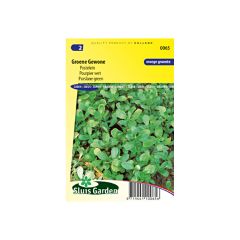
Green Purslane - Portulaca oleracea
- Height at maturity 15 cm
Discover other Purslanes
View all →Available in 1 sizes
Available in 1 sizes
Available in 1 sizes
Available in 1 sizes
Available in 1 sizes
Sowing of purslane
Where to sow?
Purslane grows spontaneously in neglected areas. This means it is not particularly fussy about soil type. However, it has a preference for dry, sandy, light, and well-drained soils, although it will thrive in most ordinary soils.
It requires no specific fertilisation and adapts very easily. You can even sow it at the base of tomatoes or aubergines to save some space.
On the other hand, provide it with a well-sunny location.
When to sow?
Purslane needs warmth to germinate, so you must wait until the soil is sufficiently warmed to sow. In open ground, sowing takes place from May when the risk of frost has passed, and continues through July and August. You can sow in staggered intervals each month to achieve a continuous harvest. Avoid windy days as the seeds are very volatile.
It is possible to sow under cover and in pots from April. The seedlings can then be transplanted into open ground.
How to sow?
In open ground:
- Loosen the soil with a broadfork or a rake, ensuring to remove any weeds
- Mark out lines spaced 20 to 25 cm apart
- Sow very sparsely and cover with a very thin layer of soil
- Lightly firm down with the back of the rake and water gently in a fine spray
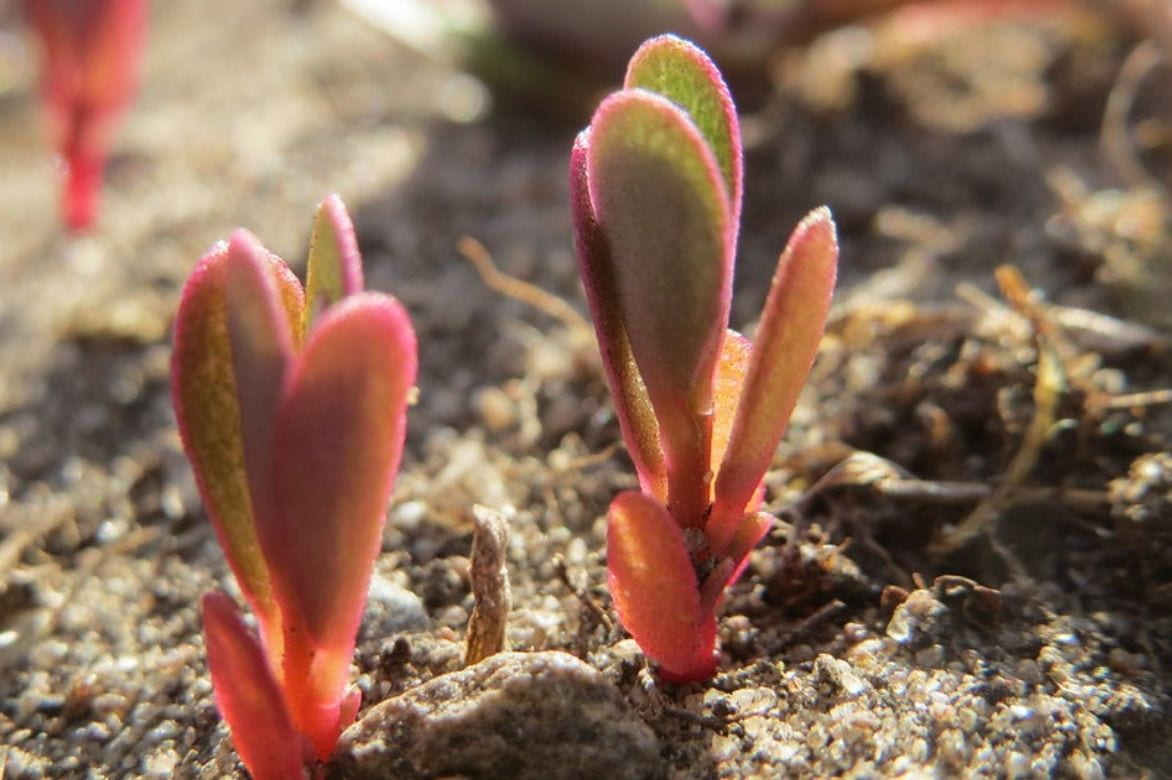
Once they have 4 or 5 leaves, purslane shoots can be transplanted into open ground or pots
Once the seedlings have 4 to 5 leaves, thin them out, keeping one plant every 25 cm.
You can also sow by broadcasting.
In pots:
- In clusters filled with potting soil mixed with a bit of sand, sow 2 to 3 seeds
- Cover with a very thin layer of substrate
- Water gently
- When the seedlings have 4 to 5 leaves, you can transplant them, spacing them 25 cm apart. You can also transplant and grow a purslane plant in a pot, placing it in the sun.
Caring for purslane
Robust and easy-going, purslane requires nothing. In the height of summer, its growth is rapid and it manages without water. However, occasional watering allows for quicker seed germination and, above all, a more tender foliage.
Weeding is unnecessary as it risks breaking the creeping and brittle stems of purslane. You may consider mulching to limit the spread of adventive plants and retain some moisture.
The only thing you can do is pinch the stems to encourage branching and the development of new, more tender growth.
There are no known pests or diseases that affect garden purslane. Its only enemies are slugs, which can feast on young plants. Discover all of Ingrid’s tips for naturally getting rid of these pests. Or watch Pascal’s video on how to make a slug trap.
Harvesting and storing purslane
About two months after sowing, just before flowering, it is possible to harvest the first leaves and stems. Prefer young shoots, which are much more tender and sweeter in taste. The harvest occurs from early August to September-October. As soon as the first frosts arrive, the foliage wilts and is no longer edible.
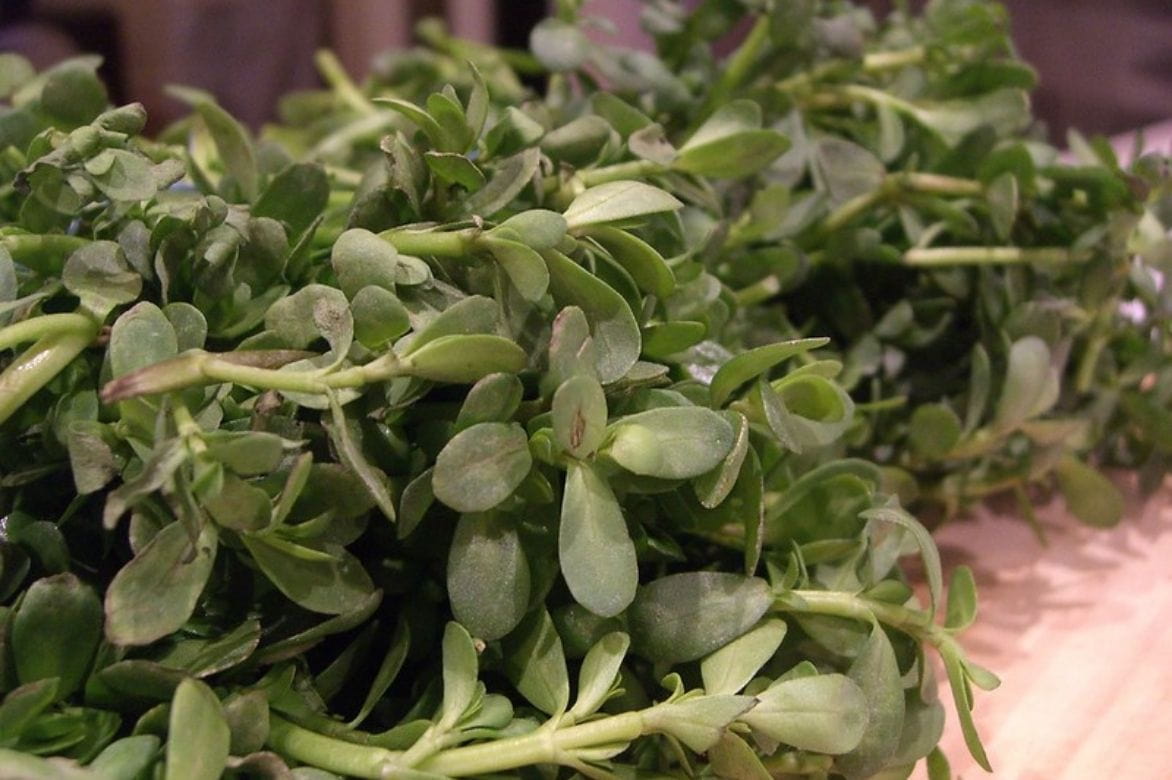
The harvest of purslane leaves and stems takes place from early August to the end of October
By not cutting too close to the base, you encourage the regrowth of young shoots. It is possible to carry out two to three harvests from the same plant per season. The leaves and stems do not keep well and should be consumed quickly after picking.
Keep a few plants to harvest the seed capsules after flowering. Watch your plants closely as the seeds fall very quickly, and purslane self-seeds easily and can become invasive. You can store these seeds until the following year in an envelope, in a dry and ventilated place.
What to do with purslane leaves and stems?
With its tangy, delicately lemony and spicy flavour, and a hint of bitterness, purslane is ideal raw in a mixed salad of various greens, complemented by rocket, watercress, lamb’s lettuce, and spinach or beetroot shoots. It can also be added to tabbouleh, a smoothie, or a vegetable juice.
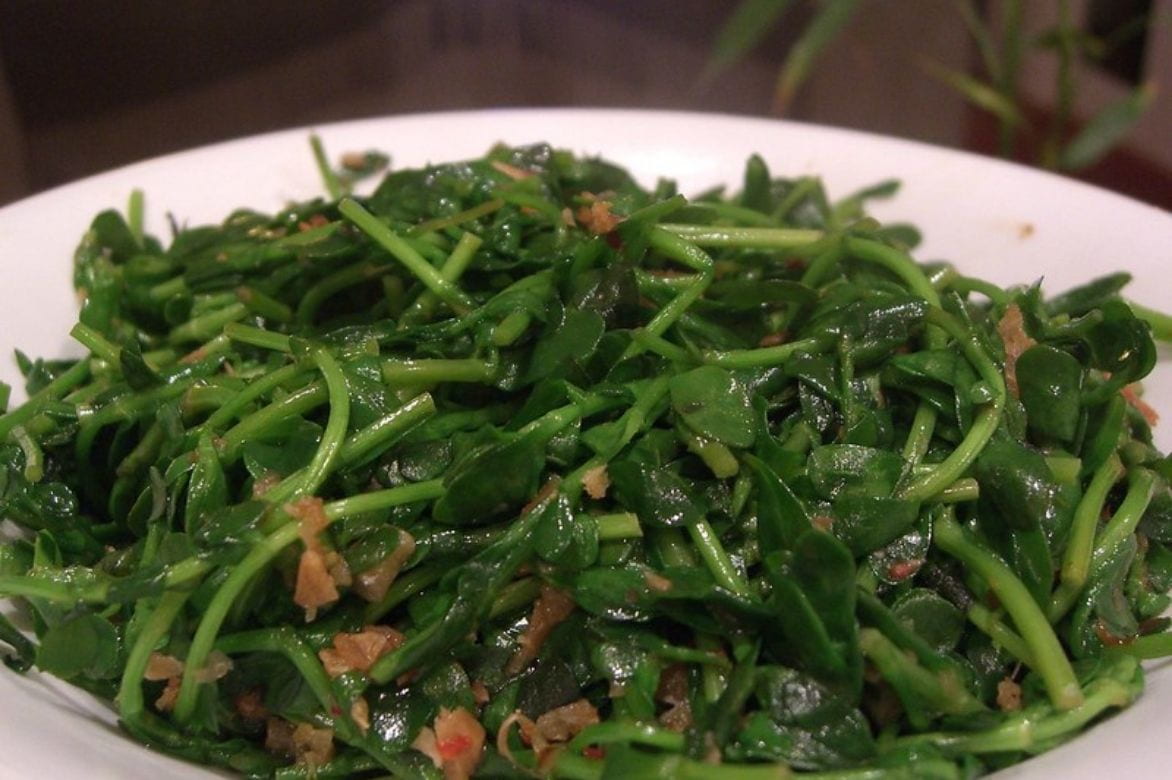
The leaves and stems of purslane can be eaten raw or cooked
Cooked leaves can also be enjoyed in soups, prepared like spinach, incorporated into a risotto, quiche, or omelette, or simply sautéed with a bit of olive oil. Purslane also flavours sauces to accompany meats and fish. The stems are prepared as condiments and preserved in vinegar.
→ Learn more about using purslane in cooking!
Purslane, a rich plant
Considered a wild plant, purslane is widely consumed in some African countries. It is also an integral part of the Cretan diet, and it is not uncommon to see it at market stalls. It should be noted that purslane leaves and stems are rich in provitamin A and vitamins B and C, as well as in minerals such as magnesium, calcium, iron, and potassium. Additionally, purslane has the unique characteristic of containing Omega-3 fatty acids, known for their protection of the cardiovascular system.
As for purslane leaves, they are mucilaginous, meaning they contain mucilage, a slightly gelatinous substance that is said to have soothing properties for the skin. This mucilage also helps to naturally thicken a soup or sauce.
Discover our tutorial: How to cook purslane?
- Subscribe!
- Contents































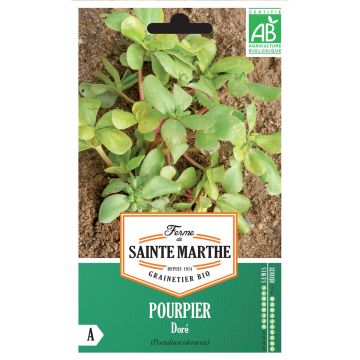
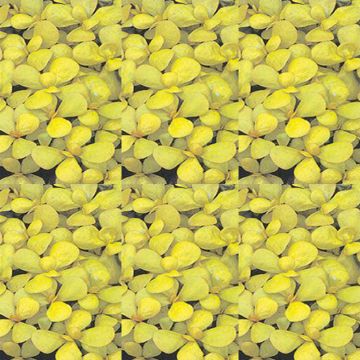


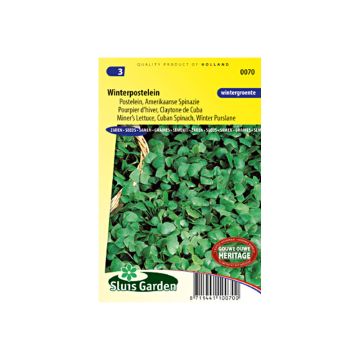
Comments